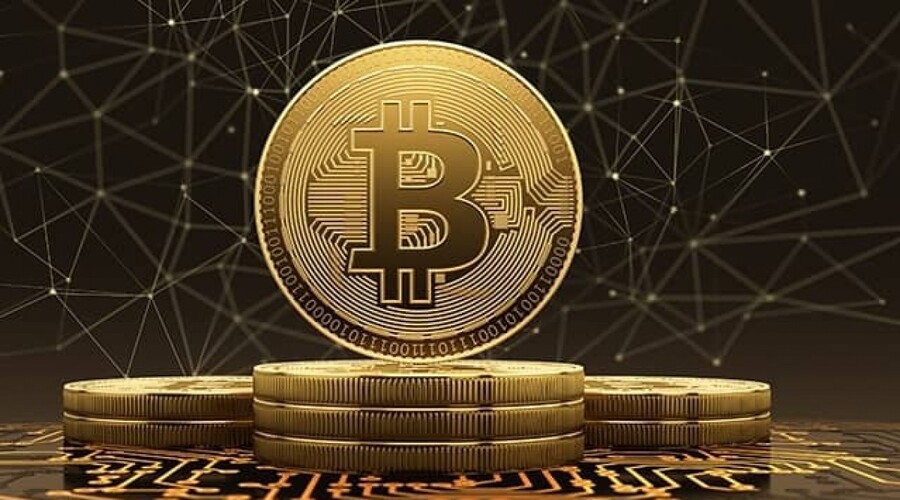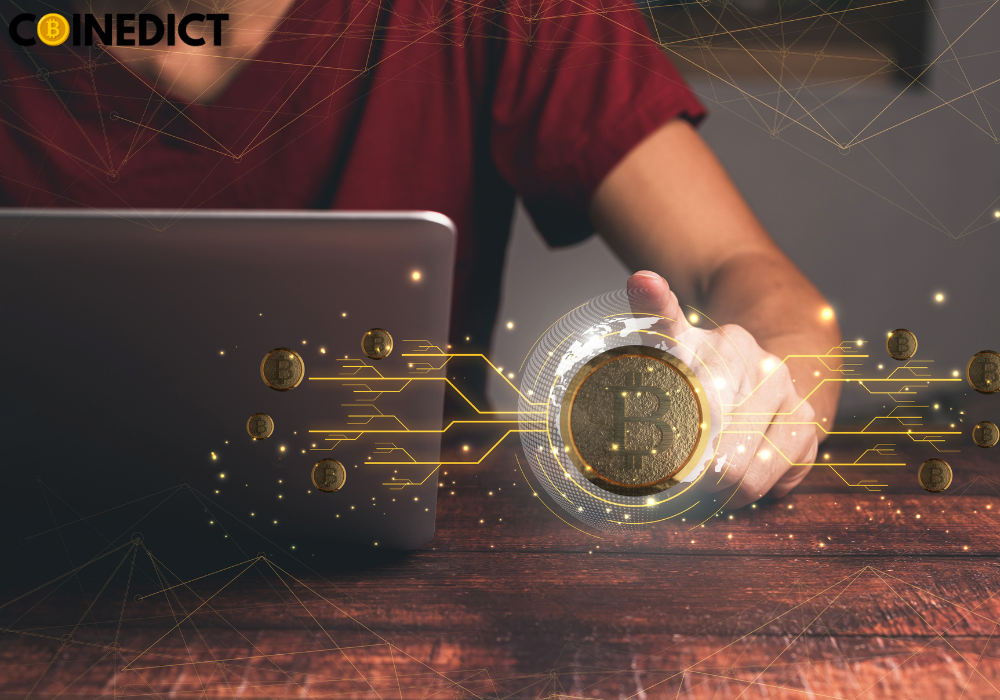Bitcoin has become a buzzword in the world of finance, and for good reason. As the first and most popular cryptocurrency, Bitcoin offers a decentralized, secure, and fast way to transact value without the need for intermediaries such as banks. If you’re looking to get in on the action, you may be wondering how to buy Bitcoin. In this beginner’s guide, we’ll take you through the steps of buying Bitcoin and explain some important concepts along the way.
Introduction
Bitcoin has gained massive popularity in recent years, with many people investing in it as a store of value or as a means of payment. Buying Bitcoin can seem daunting at first, but it’s actually a straightforward process that can be completed in just a few steps. In this guide, we’ll take you through everything you need to know to buy Bitcoin with ease.
What is Bitcoin?
Bitcoin is a digital currency created in 2009 by an unknown person or group using the false name Satoshi Nakamoto. Bitcoin uses a decentralized system, which means that transactions are processed on a network of computers rather than by a single entity like a bank. Bitcoin transactions are recorded on a public ledger called the blockchain, which makes it extremely difficult for anyone to manipulate the system or counterfeit Bitcoin.
Why buy Bitcoin?
There are many reasons for you to buy Bitcoin. For starters, Bitcoin has been a great investment for those who got in early. Bitcoin’s value has increased by more than 200% in the past year alone, and many experts believe that it still has a lot of room to grow.
Another reason to buy Bitcoin is that it offers a decentralized and secure way to transact value. Bitcoin transactions are fast, cheap, and can be completed without the need for intermediaries like banks. This makes it an attractive option for those who want to move money across borders or who want to avoid the fees associated with traditional banking.
Setting up a Bitcoin wallet
Before you can buy Bitcoin, you’ll need to set up a Bitcoin wallet. A Bitcoin wallet is a digital wallet that lets you store, send, and receive Bitcoin. There are many different types of Bitcoin wallets, including hardware wallets, software wallets, and paper wallets.
Software wallets are the most common type of Bitcoin wallet and are available for download on your computer or mobile device. Some popular software wallets include Electrum, Mycelium, and Exodus. Hardware wallets are physical devices that allow you to store your Bitcoin offline. Examples of hardware wallets include Ledger and Trezor. Paper wallets are simply a piece of paper with your private key written on it. While paper wallets are the most secure type of wallet, they can be difficult to use and are not recommended for beginners.
Choosing a Bitcoin exchange
Once you’ve set up a Bitcoin wallet, the next step is to choose a Bitcoin exchange. A Bitcoin exchange is a marketplace that allows you to buy and sell Bitcoin. There are many different Bitcoin exchanges to choose from, each with its own advantages and disadvantages.
Some popular Bitcoin exchanges are Binance, Coinbase, and Kraken. When choosing a Bitcoin exchange, it’s important to consider factors such as security, fees, and user experience.
Verifying Your Identity
Before you can buy Bitcoin on most exchanges, you’ll need to verify your identity. This is a necessary step for anti-money laundering (AML) and know-your-customer (KYC) regulations. The verification process can vary depending on the exchange, but it typically involves providing personal information such as your name, address, and government-issued ID.
Some exchanges may also require additional documentation, such as a utility bill or bank statement, to verify your address. The verification process can take anywhere from a few minutes to several days, so it’s important to start the process early if you plan on buying Bitcoin soon.
Funding Your Account
Once you’ve verified your identity, the next step is to fund your account. Most Bitcoin exchanges allow you to fund your account using a variety of methods, including bank transfers, credit or debit cards, and even other cryptocurrencies.
Bank transfers are typically the cheapest and most popular way to fund your account, but they can take several days to process. Credit or debit cards are a faster option but may come with higher fees. Some exchanges may also allow you to buy Bitcoin with cash through a peer-to-peer marketplace.
Placing a Buy Order
Once your account is funded, you can place a buy order for Bitcoin. This is typically done through the exchange’s trading platform, which allows you to specify how much Bitcoin you want to buy and at what price.
If you’re new to trading, it’s important to understand the difference between market and limit orders. A market order will buy Bitcoin at the current market price, while a limit order will only buy Bitcoin if the price falls to a certain level. It’s also important to consider the fees associated with buying Bitcoin, which can vary depending on the exchange and the payment method used.
Storing Your Bitcoin
Once you’ve bought Bitcoin, it’s important to store it in a secure location. This is where your Bitcoin wallet comes in. You can store your Bitcoin in your software, hardware, or paper wallet, depending on your preference.
It’s important to note that Bitcoin transactions are irreversible, which means that if you lose your private key or your wallet is hacked, your Bitcoin is gone for good. This is why it’s crucial to take steps to secure your Bitcoin, such as using a strong password, enabling two-factor authentication, and keeping your private key offline.
Understanding Bitcoin Fees
When buying Bitcoin, it’s important to consider the fees associated with the transaction. Bitcoin fees can vary depending on factors such as network congestion and transaction size. In general, fees are higher during times of high network activity and can range from a few cents to several dollars per transaction.
It’s also important to consider the fees associated with your Bitcoin wallet and exchange. These fees can vary depending on the provider and can include fees for transactions, storage, and withdrawals.
Risks and Considerations
As with any investment, buying Bitcoin comes with risks and considerations. The value of Bitcoin can be volatile and subject to sudden fluctuations, which means that you could lose money if the price drops after you buy.
It’s also important to consider the regulatory landscape for Bitcoin, which can vary from country to country. Some countries have banned or restricted the use of Bitcoin, while others have taken a more lenient approach.
Alternatives to Buying Bitcoin
If you’re not comfortable buying Bitcoin directly, there are several alternatives to consider. One option is to invest in a Bitcoin exchange-traded fund (ETF), which allows you to invest in Bitcoin without actually buying it. Another option is to invest in companies that are involved in the Bitcoin ecosystem, such as mining companies or payment processors.
Buying Bitcoin can seem intimidating at first, but with the right knowledge and tools, it can be a straightforward and rewarding process. By following the steps outlined in this guide, you can buy Bitcoin and start benefiting from its decentralized, secure, and fast transaction capabilities.
However, it’s important to remember that buying Bitcoin comes with risks and considerations. The value of Bitcoin can be volatile, and regulatory uncertainty can make it difficult to predict its future prospects. It’s also important to take steps to secure your Bitcoin, such as using a strong password, enabling two-factor authentication, and keeping your private key offline.
If you’re not comfortable buying Bitcoin directly, there are several alternatives to consider, such as investing in a Bitcoin ETF or companies involved in the Bitcoin ecosystem.
Conclusion
In conclusion, buying Bitcoin can be a great way to invest in the future of finance and take advantage of its many benefits. Just make sure to do your research, take appropriate precautions, and never invest more than you can afford to lose.











